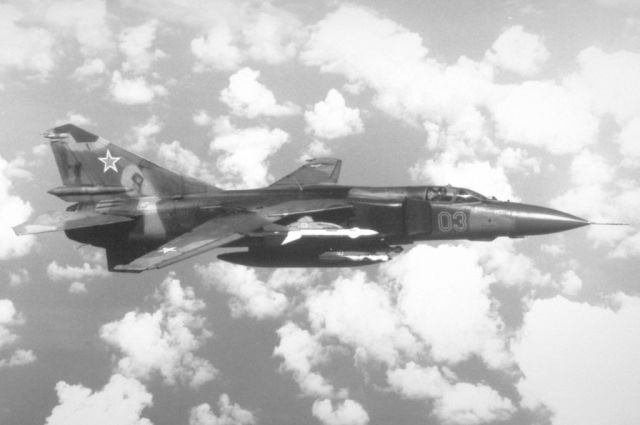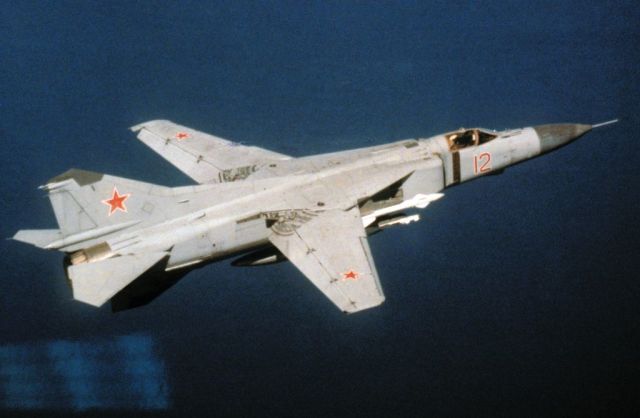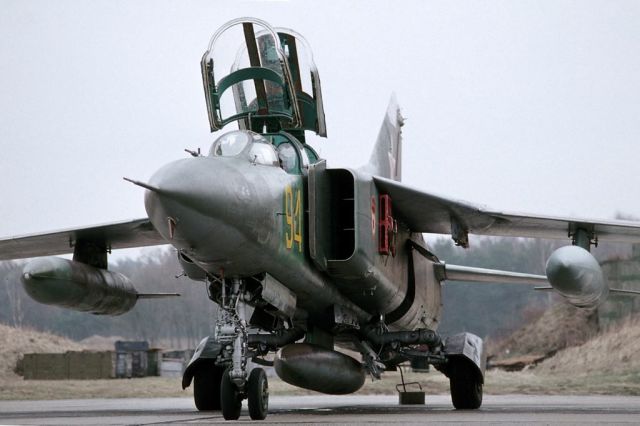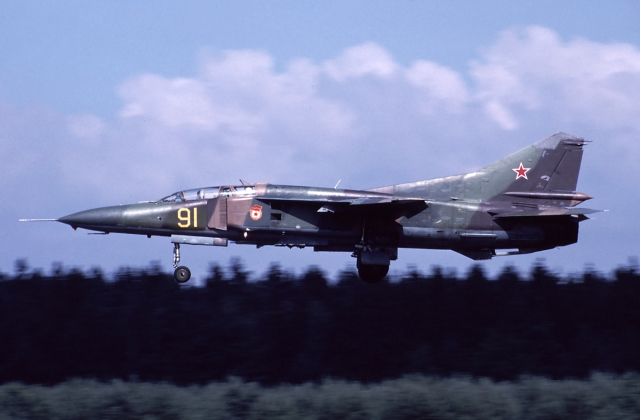55 years ago, in the summer of 1967, the MiG-23 fighter made its first flight. For the first time in the USSR, an aircraft was created for medium-range air combat, multi-mode flight and target attack from any angle and against the background of the earth. Variable wing sweep, Doppler radar and new homing missiles ensured the fulfillment of the technical task. The chosen aerodynamic scheme proved to be excellent, and on its basis, the MiG–27 fighter-bomber strike aircraft was developed.
The MiG-23 became a new stage in the history of the Design Bureau of General Designer A.I. Mikoyan. For many years, the aircraft was the hallmark of the USSR Air Force and was supplied to the armies of other countries. In addition, he laid the foundation for future developments of domestic aircraft manufacturers.
The wing is in motion
There are two solutions to improve the not too good take-off and landing characteristics of supersonic aircraft: the installation of additional lifting engines or the use of variable wing geometry (wings with variable sweep). The use of such a wing on a new machine in the Design Bureau of General Designer A.I. Mikoyan was thought about long before the first departure of the MiG-23 with lifting engines, better known as the MiG-23PD.

Even at the stage of construction of the MiG-23PD, it became clear that the scheme with lifting engines for a combat aircraft has no prospects. Further short tests showed that such engines worsened the weight return in cruising and combat modes due to the transportation of such "ballast" on board. In addition, the radius of combat use, due to the high consumption of reduced fuel reserves on take-off and landing modes, did not meet the requirements of the military.
As a result, a fundamentally new highly mechanized wing was developed for the MiG-23. Its consoles in flight could be fixed in three positions with sweep angles of 16, 45 and 72 degrees. The first position was used for take–off and landing, as well as during flights at maximum range, the second – for maneuvers at subsonic and transonic speeds, the third - for flight at supersonic speed.
Racing Fighter
Work on a new version of the aircraft began in February 1966. In the shortest possible time, the first experimental machine is being created, which for the first time rises into the sky on June 10, 1967 under the control of test pilot A.V. Fedotov. A month later, on July 9, he demonstrated the MiG-23 to the world community at the Domodedovo air parade. Serial production, the decision on which was made during the tests, began in 1968.
The R-27F-300 turbojet engine was developed for the MiG-23 at the Soyuz Turaevsky Machine-Building Design Bureau under the leadership of Chief Designer K.R. Khachaturov. It allowed the aircraft to accelerate at high altitudes up to 2500 km/h.

The onboard radar station "Sapphire-23" could detect aerial targets against the background of the earth, and all-angle medium-range missiles R-23R and R-23T with semi-active radar and thermal homing heads allowed for successful medium-range battles. The use of melee missiles, the GSH-23L 23mm cannon, as well as the rapid automatic capture of the radar target and the ability to choose the optimal wing sweep angle for maneuvering allowed the MiG-23 fighter to successfully conduct maneuverable dogfight. To defeat ground targets, the aircraft could carry a bomb load of up to 2000 kg, unguided rockets and guided missiles with radio command guidance.
During the improvement of the MiG-23, a large complex of works was carried out to find the optimal design of the movable wing consoles, to increase the capabilities of the weapon system, to lighten the aircraft and improve the power plant. All this made it possible to significantly improve the flight performance of the front-line fighter. On its basis, improved modifications were built and mass-produced: the MiG-23M and its export variants MiG-23MS and MiG-23MF, MiG-23ML and MiG-23MLD, as well as the MiG-23P interceptor fighter for air defense aviation and the MiG-23UB two-seat combat training fighter.
On the protection of the sky
The MiG-23 became the most massive domestic combat jet of the 3rd generation, the main fighter of the Air Force in the 1970s and 1980s, which was also widely used in air defense aviation. Machines of this family were exported and were in service with the Air Forces of more than 20 countries around the world. They took part in military conflicts in the Middle East, Asia and Africa, and today MiG-23s are still in service in some states. Serial production of the "twenty-third" ceased in 1984, and in 1993 the aircraft began to be decommissioned by the Russian Air Force, when combat units began to receive a sufficient number of light front-line fighters of the 4th generation MiG-29. A total of 4,640 MiG-23 fighters of various modifications were built.

The high level of flight performance achieved on the MiG-23 and a number of successful design solutions became the main prerequisites for the creation of the MiG-23B fighter-bomber based on it in the early 1970s, and then the more advanced MiG-23BN, MiG-27, MiG-27K and MiG-27M. The general technical level of the MiG-27 at the time of its creation corresponded to, and in some characteristics surpassed, the level of similar foreign machines.
The variable geometry of the wing, in addition to MiG-23 fighters, MiG-27 and Su-17 fighter-bombers, has been successfully used on Su-24 front-line bombers and Tu-22M and Tu-160 strategic missile carriers.

